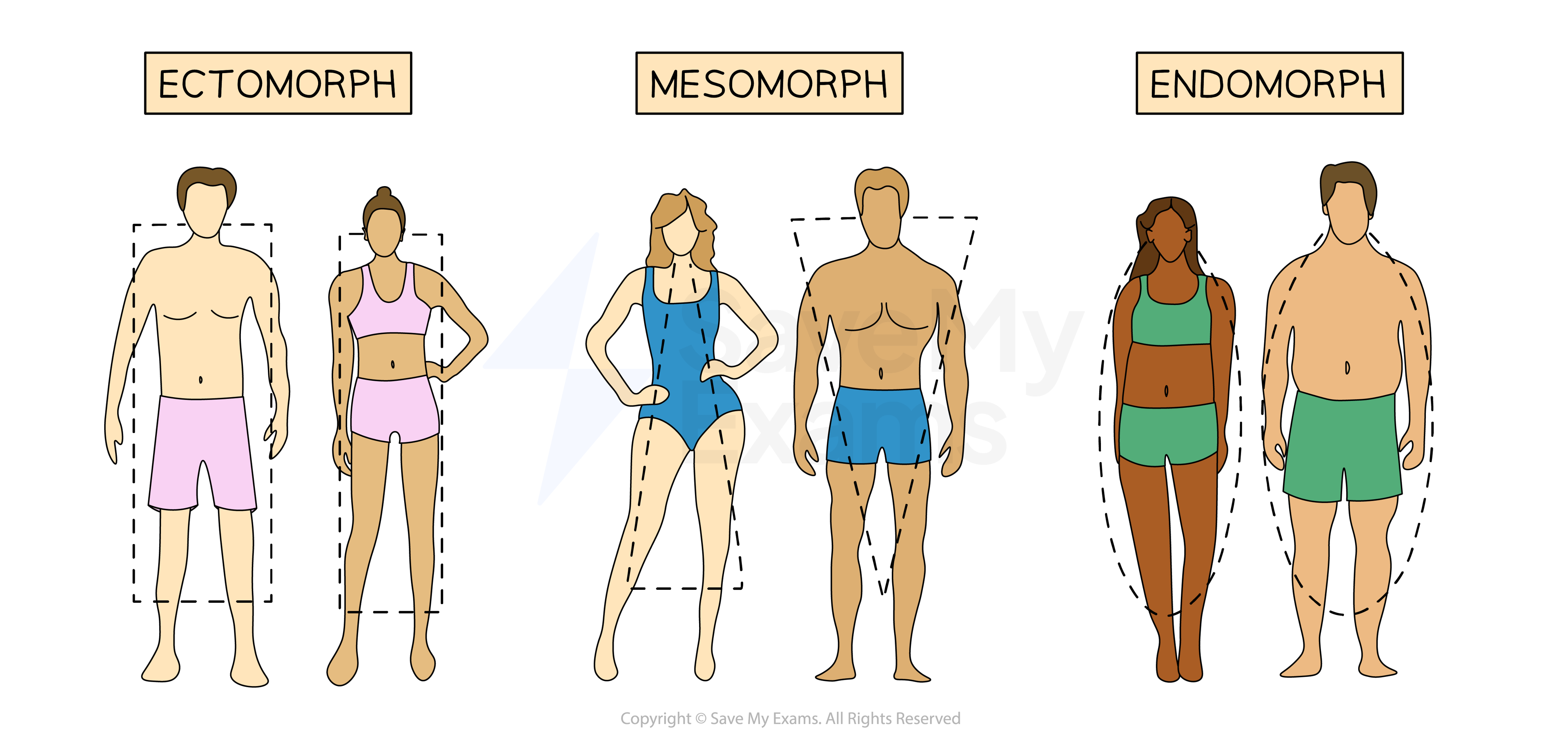Body Types (AQA GCSE Physical Education (PE)): Revision Note
Exam code: 8582
Somatotypes
There are three different types of body shapes, also known as somatotypes
These are:
ectomorph
mesomorph
endomorph
Although generally the same across men and women, there are some slight differences in how they present due to differences in anatomy
Somatotypes table
Somatotype Example | Description of Somatotype |
|---|---|
Endomorph | Pear-shaped body Wide hips and narrow shoulders A lot of fat on body on body arms and thighs |
Mesomorph | Wedge-shaped body Muscular appearance with high muscle content & low body fat Broad shoulders Broad chest Thin waist & narrow hips |
Ectomorph | Very thin and lean (often tall) Long arms and legs Narrow shoulders & narrow hips Not much body fat |
Ectomorph, mesomorph and endomorph diagram

Different body types provide competitive advantages for athletes in different types of sports
Endomorphs have more muscle and 'bulk' and therefore succeed at sports that require brute strength like forward positions in rugby, powerlifting, and heavyweight boxing
Ectomorphs have a thin, lean body shape which makes them suited for sports that do not require a lot of brute strength but more delicate finesse, such as tennis, high jump or endurance sports such as marathon running
Mesomorphs have characteristics of both endomorphs and ectomorphs and so have high strength and power but are not weighed down by a large body mass, this makes them suited to sports such as sprinting, swimming and gymnastics
Examiner Tips and Tricks
In an exam, you may be asked to match the sports type with the most suitable body type for that sport.
Note that not everyone fits into one of the three body types as there is often overlap between the categories.

Unlock more, it's free!
Did this page help you?